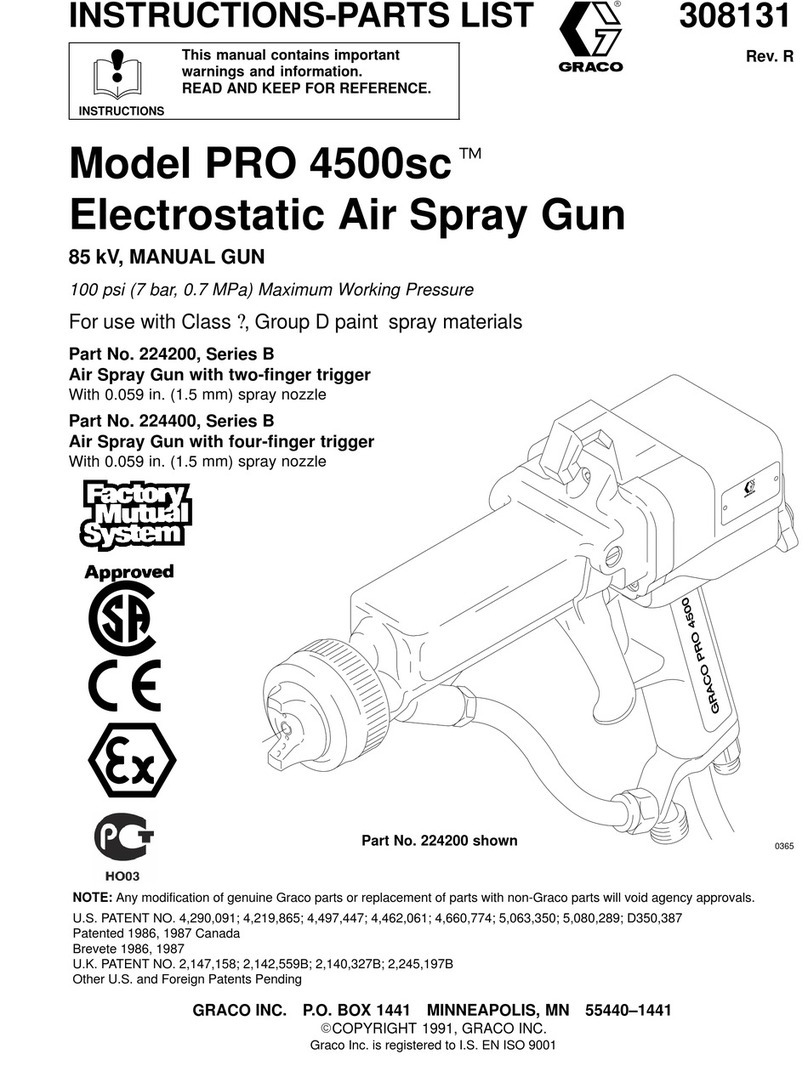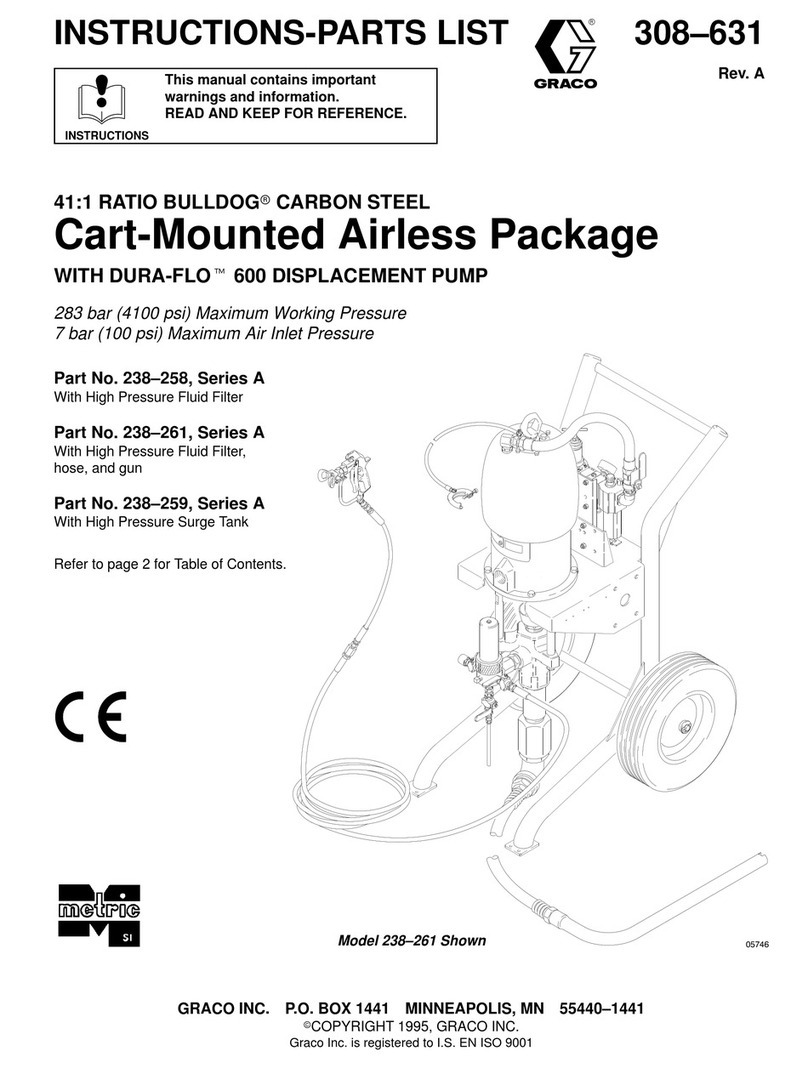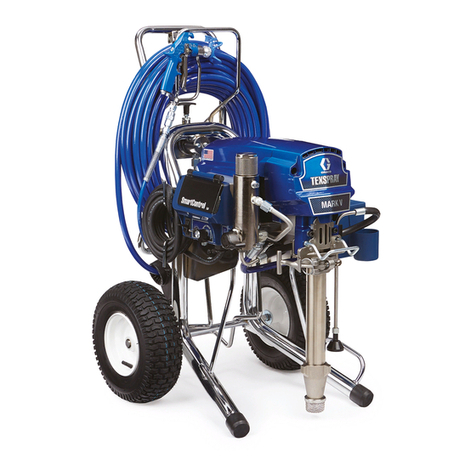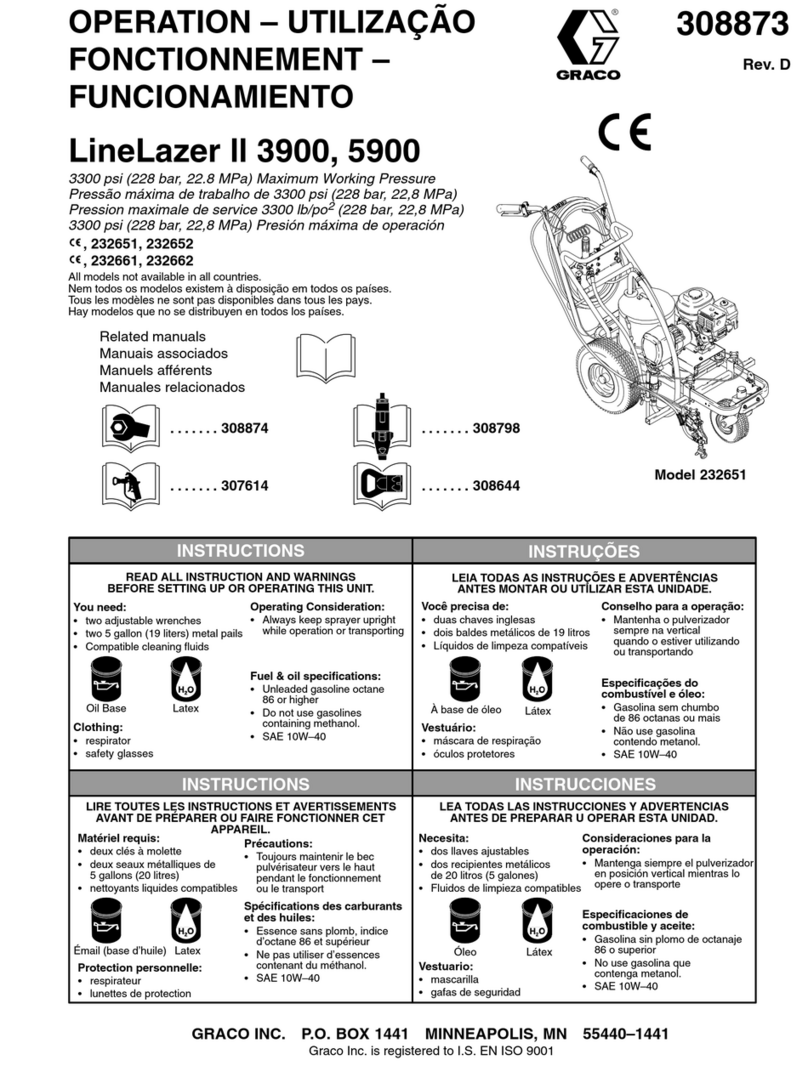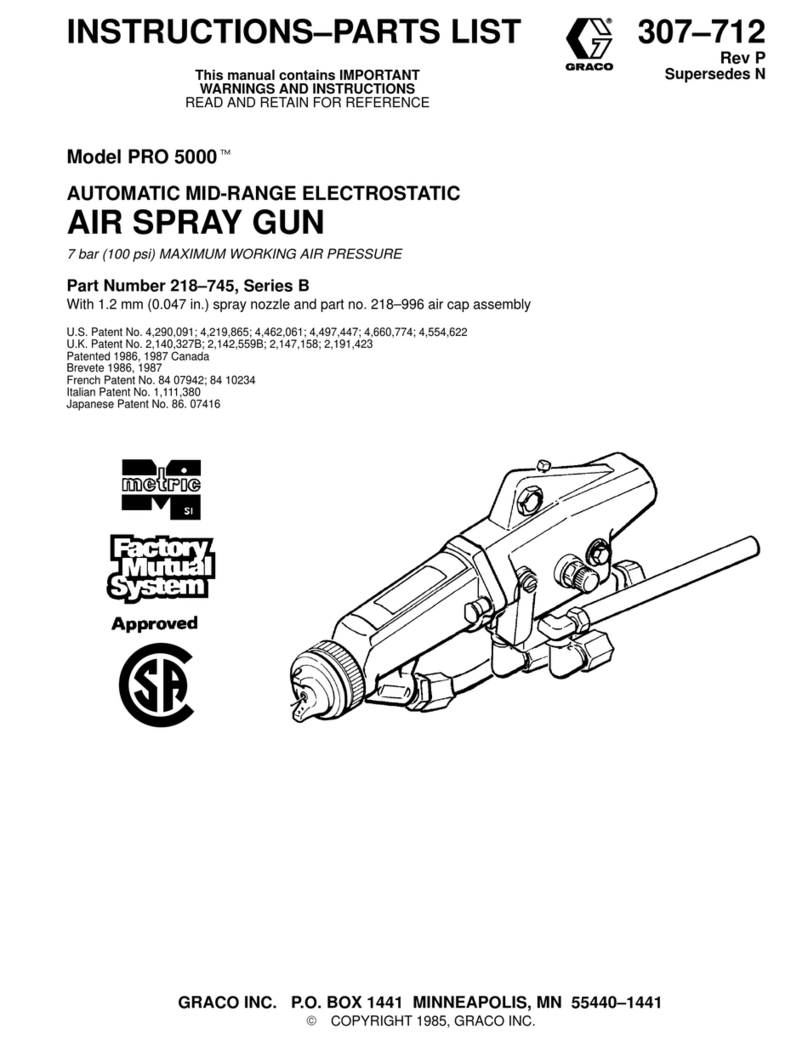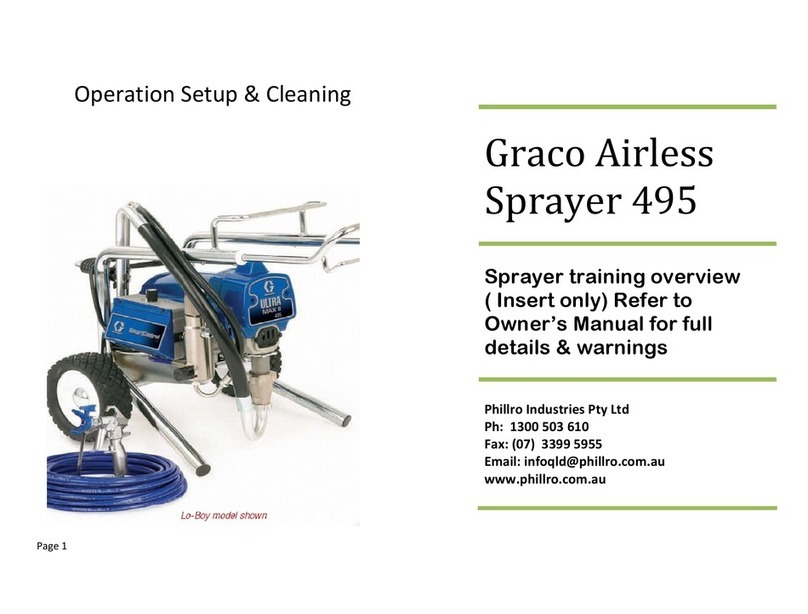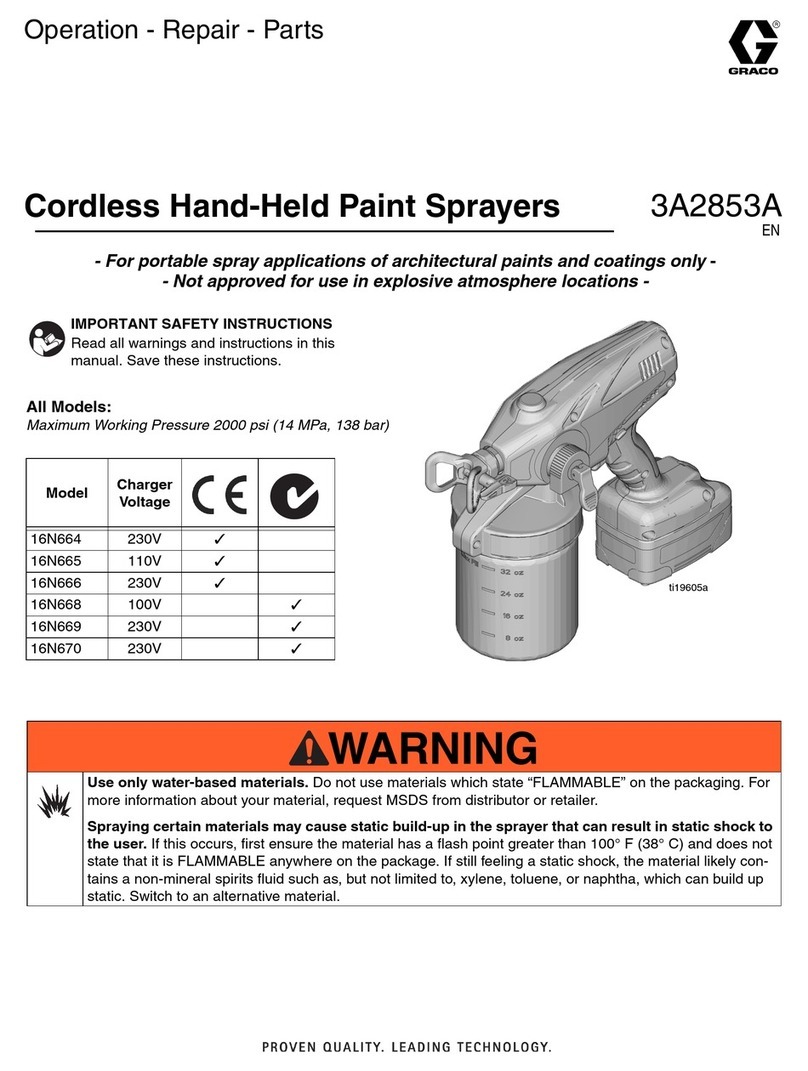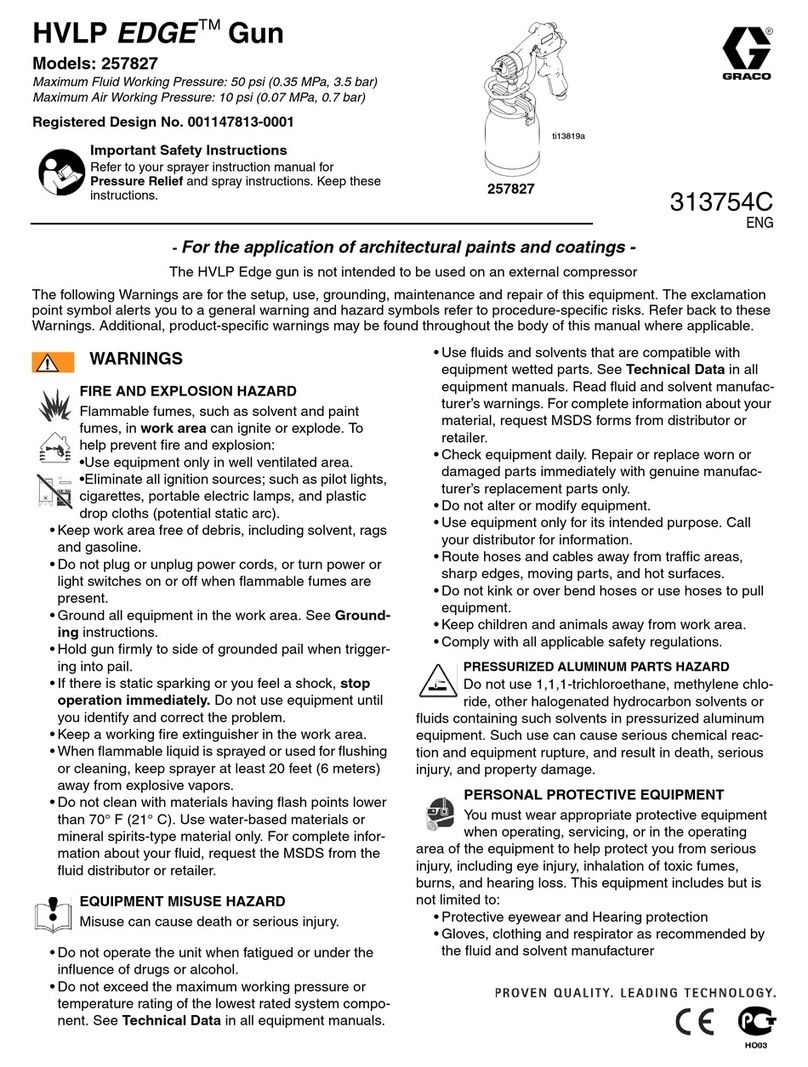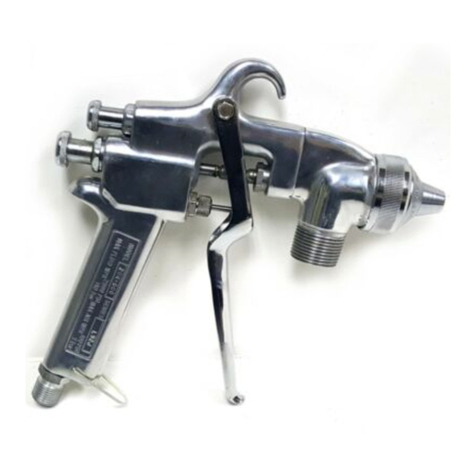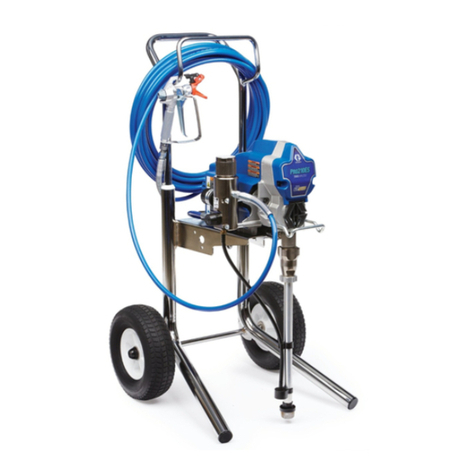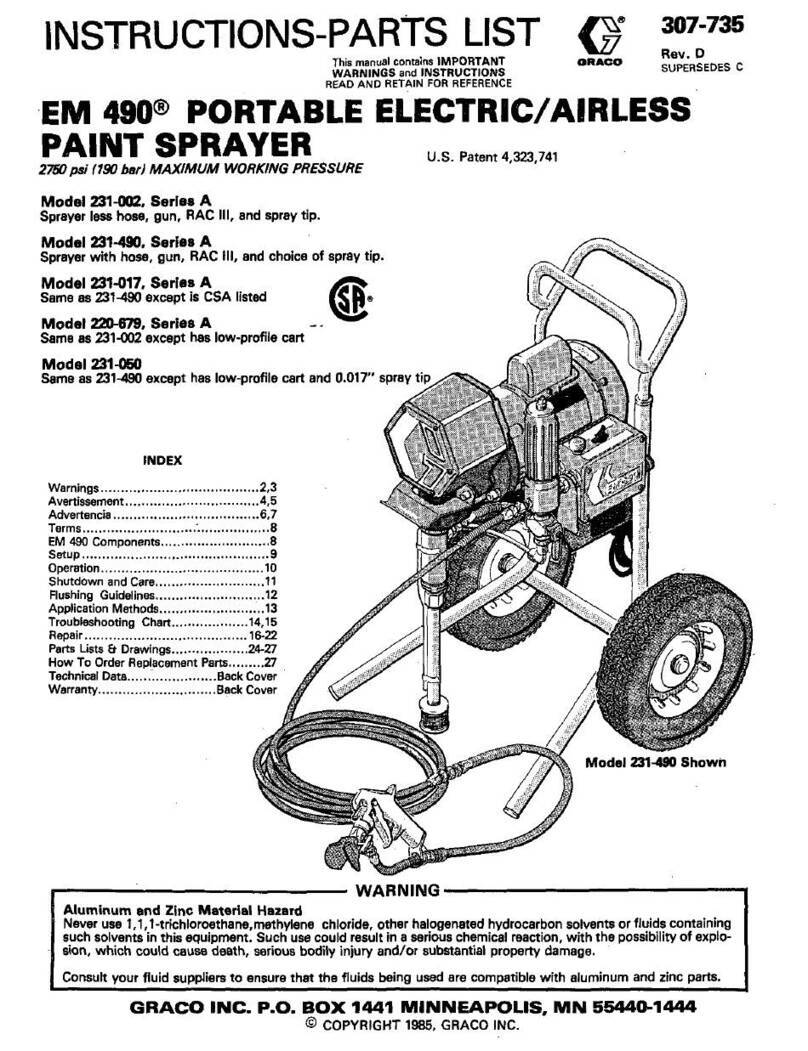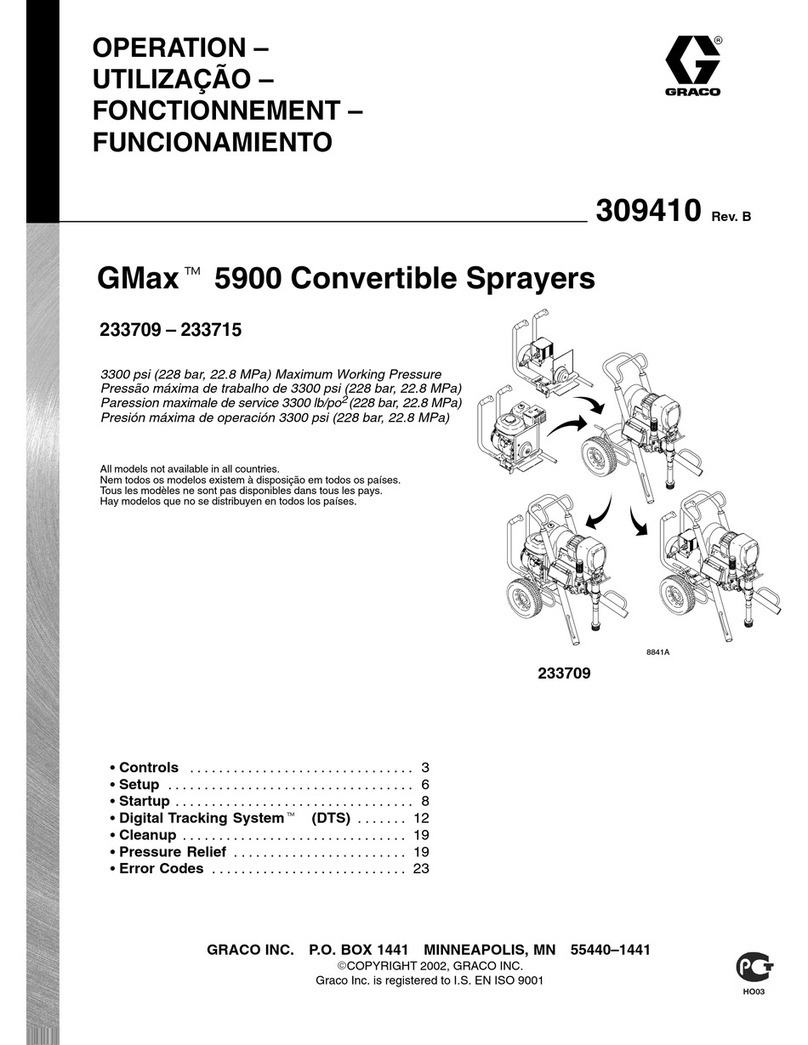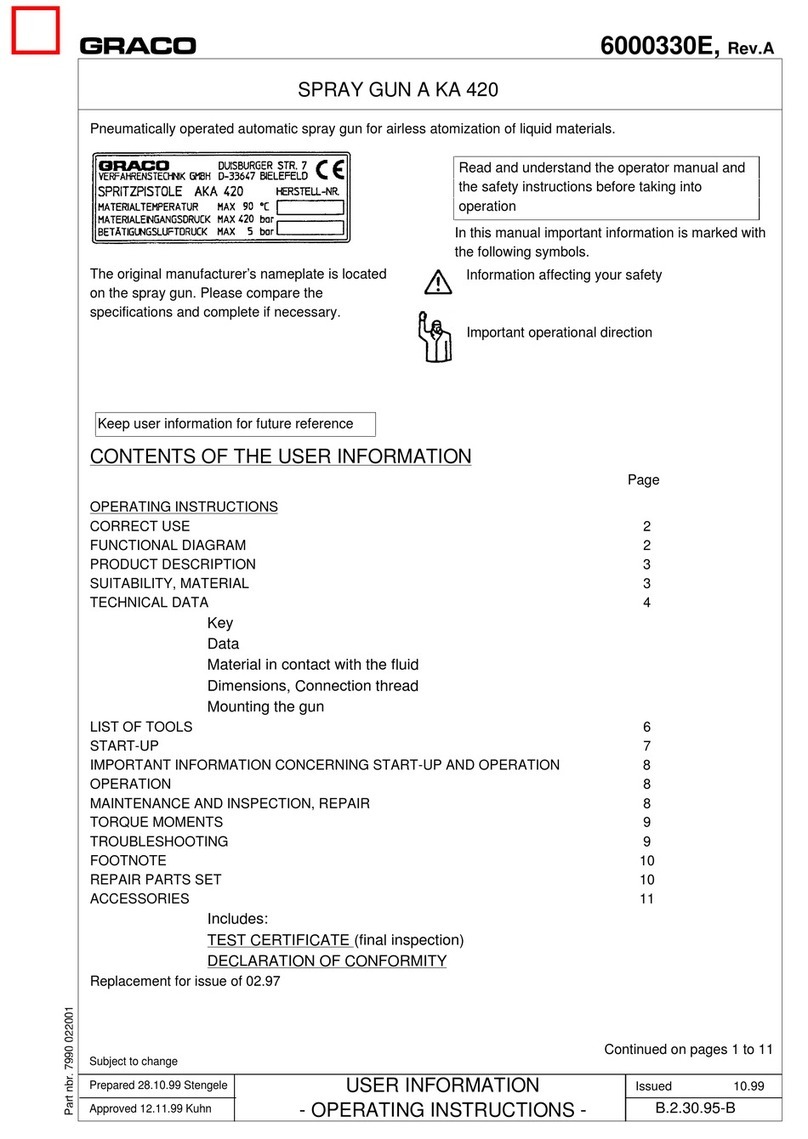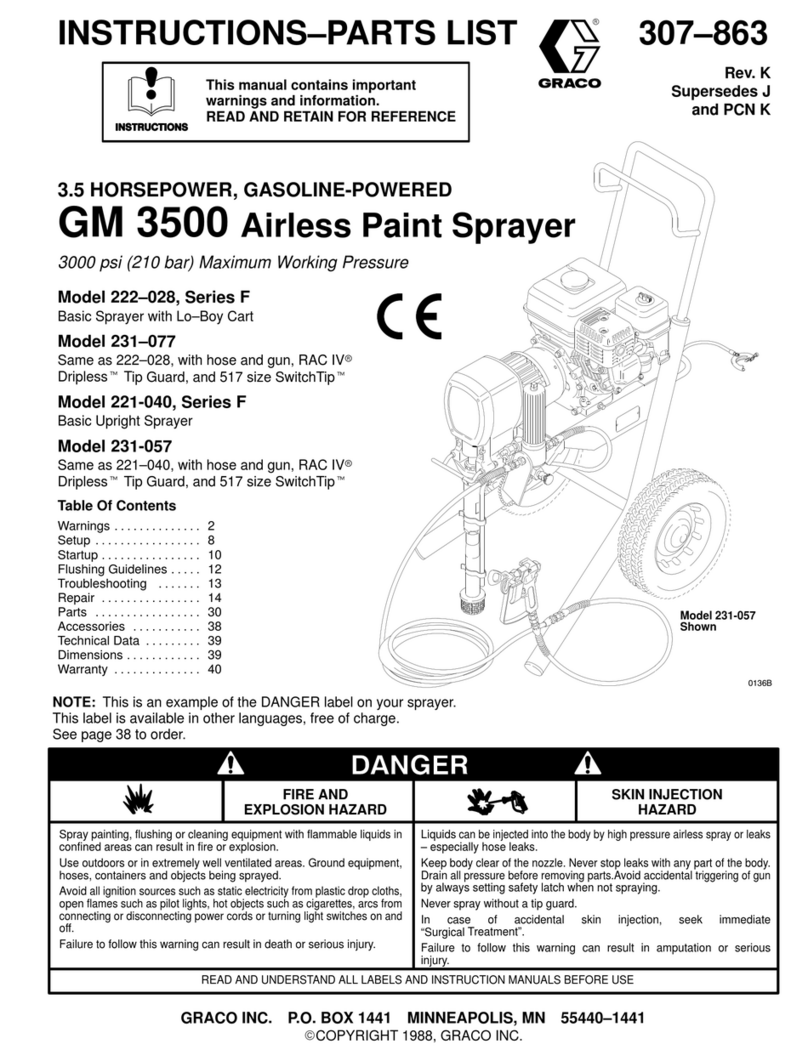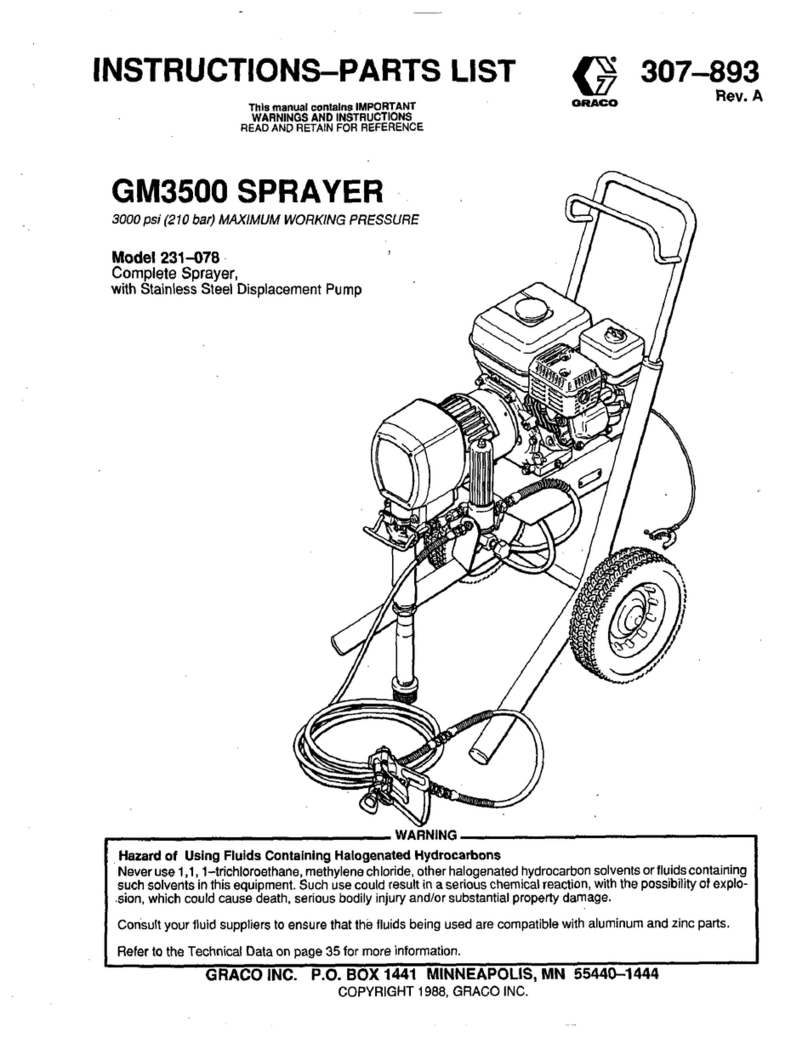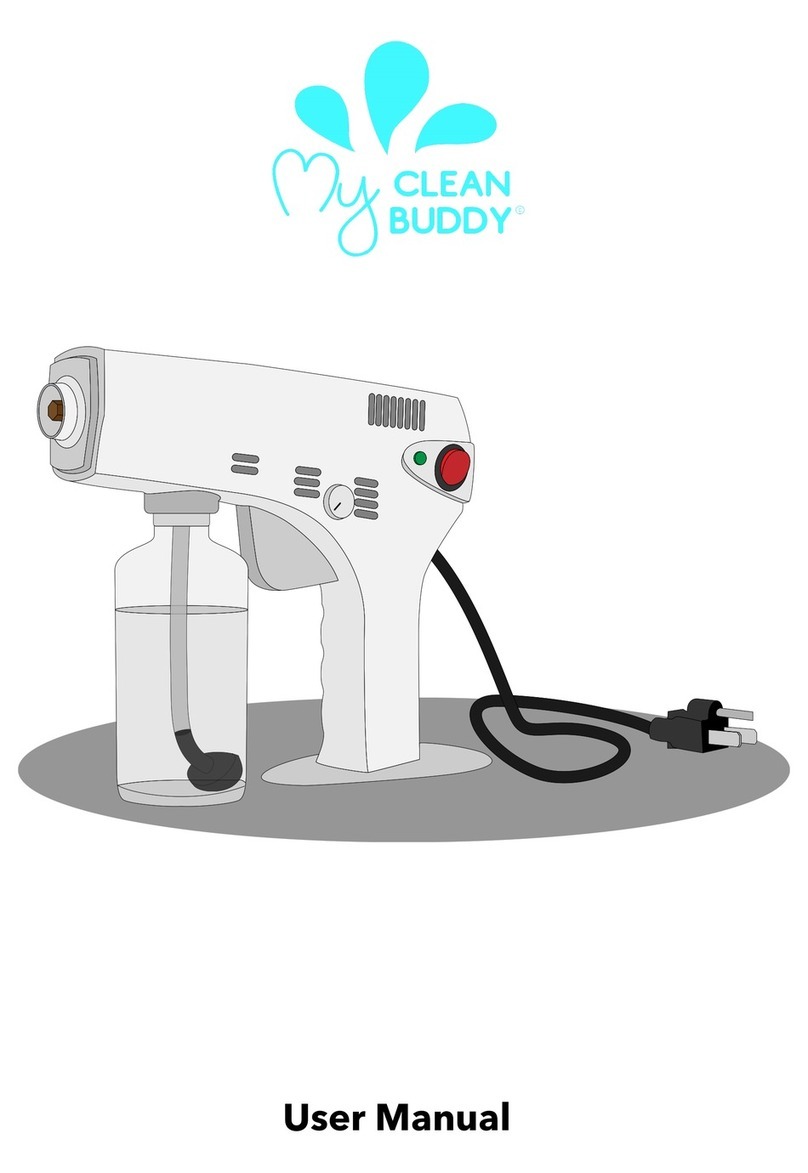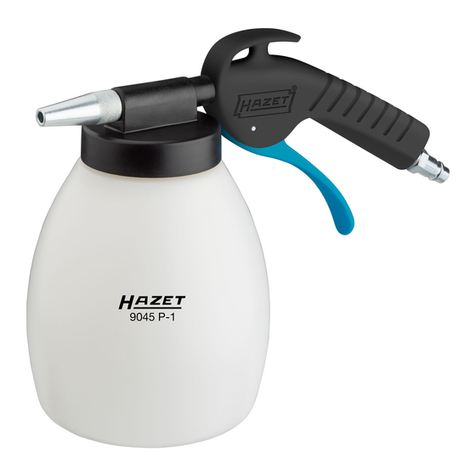
...
..
.. .
:..,
.>
.. .
.-
..
,.
i
.
.
.:
.
...
..
..
,.,::I
.
..
..
.
..
MOVING
PARTS HAZARD
Moving
parts
can
pinch or amputate your finger5 or other body
the SDraver. Follow the Pressure Relief Procedure
on
page 2
parts.
KEEP CLEAR of moving
parts
when starting or operating
before checking or sarvicing any part of the sprayer, to +vent
it from starting accidentally.
EQUIPMENT MISUSE
HAZARD
General
Safely
Any misuse of the spray equipment or accessories, such as
overpressurizing, modifying parts, using incompatible chemi-
cals
and
fluids, or
using
worn
or damaged parts,
can
causethem
the skin, or other serious bodily injury, or fire, explosion or prop-
to
rupture and result in fluid injection, splashing in the eyes or
on
erty
damage.
NEVERaiterormodifyanypartofthisequipment;doingsocould
cause
it to malfunction.
CHECKaiisprayequipmentregularlyandrepairorrepiacewom
or damaged parts immediately.
Always wear protective eyewear, gloves, clothing and respirator
as recommended by the fluid and solvent manufacturer.
System
Pressure
This sprayer can develop 3000 psi
(210
bar)
MAXIMUM
WORK-
ING
PRESSURE.
Be
sure all spray equipment and accessories
used are rated to withstand the this pressure.
DO
NOT exceed
the maximum working pressure of any component or accessory
used
in
the system.
All
chemicais used
in
the sprayer must
be
chemically compat-
Fluid
and
Solvent Compatiblllty
page39
Consuliyourchemicaisuppiiertoensurecompatibiiity.
ible with the wetted parts shown
in
the TECHNICAL DATA
on
Donotusel,l,l-trichioroethane,
methyienechloride,otherhalo-
genatedhydrocarbonsoiventsorfluidscontainingsuchsolvents
Such use could result
in
a serious chemical reaction,
with
the
in
this equipmant, which contains aluminum andlor zinc parts.
possibiiityof explosion, whichcouldcausedeath, seriousbodily
injury andlor substantial properly damage.
HOSE
SAFETY
hose develops
a
leak, split or rupture due
to
any kind of wear,
High pressure
fluid
In
the
hoses can
be
very dangerous.
If
the
damage or misuse, the high pressure spray %mined from it can
causeafluidinjectioninjuryorotherseriousbodilyinjuryorprop-
erty damage.
ALL FLUID HOSES MUST HAVE STRAIN RELIEFS ON BOTH
at or close to the coupling which
can
resuit in hose rupture.
ENDSIThestrainreliefsheipprotectthehosefromkinksorbends
TIGHTEN all
fluid
connections securely before each use. High
pressure fluid
can
dislodge a
loose
coupling or allow high pres-
sure spray to
be
emitted from the coupling.
NEVER
use a damaged hose. Before each use, check the entire
hose for
cuts,
leaks, abrasion,
bulging
cover, or damage or
replacethe hose immediately.
DO
NOTtrytorecoupie highpres-
movement of the hose couplings.
if
any
of
these conditions exist,
sure hose or mend it with
tape
or any other device.
A
repaired
hose cannot contain
the
high pressure
fluid.
hosesto moveequipment. Keep hosesclearof moving partsand
HANDLE AND ROUTE HOSES CAREFULLY
Do
not
pull
on
hotsurfacesofthepumpandgasengine.Donotusefiuidsor~i-
vents which are not compatible with the inner tube and cover of
the hose.
DO
NOT expose Graco hoses
to
temperatures akve
180'
F
(82'
C)
or
below
-40'
F
(-40"
C).
Hose
Groundlng
Continuity
grounded spray system. Check the electrical resistance of your
Proper hose grounding continuity
is
essential to maintaining
a
fluid hoses at least once a week. If your hose does
not
have
a
tag
the hose supplier
or
manufacturer for the maximum resistance
on
it
which specifles
the
maximum electrical resistance, contact
limits.
Use
a
resistance meter in
the
appropriate range for your
hose
to
check the resistance.
if
the resistance exceeds the rec-
ommended limits, repiace
it
immediately. An ungrounded or
poorly grounded hose
can
make your system hazardous.
Also
read FIRE
OR
EXPLOSION HAZARD, below.
Always read the chemical manufacturer's literature before
using
them
in
this sprayer.
Static electricity
is
created by the flow of fluid through
the
pump
grounded,sparkingmaycccur,andthesystemmaybecomehaz-
and hose.
If
every part of the spray equipment
is
not properly
ardous.Sparkingmayaisooccurwhenpiugginginorunplugging
apowersupplycordorusingagasolineengine.Sparkscanignite
fumes from solvents and the fluid being sprayed, dust particles
and other flammable substances, whether you are spraying
in-
doorsoroutdoors,andcancauseafireorexplosionandserious
bodily injury and property damage.
usingthisequipment.ST0PSPRAYlNG
IMMEDIATELY. Check
Ifyouexperienceanystaticsparkingorevenaslightshockwhiie
the
entire system for proper grounding.
Do
not
use the system
again
until
the problem has been identified and corrected.
Grounding
TO reduce the risk
of
static sparking, ground the sprayer and ail
otherspray equipment usedor located inthespray area. CHECK
your local electrical code for detailed grounding instructions for
spray equipment:
your area and
type
of equipment.
BE
SURE to ground all of this
1.
Sprayer:connectagroundwireandciamp(suppiied)toatNe
earth ground.
GASOLINE ENGINE
HAZARD
@&g$&g!$@gg
NEVER
fiii
the fuel tank while the engine is running or hot. Fuel
spilled
on
a hot surface can ignite and cause a fire.
ALWAYS pour fuel
in
slowly toavoid spilling. Also read FIRE
OR
EXPLOSION HAZARD, above. and FUELING
on
oaoe 9.
2. Fluid hoses:
use
only grounded hoses
with
a maximum of
500
ft
(150
m) combined hose
lengthtoensuregroundingcontinu-
lty.
Sea
Hose Grounding Continuity above.
3.
Spraygun:obtaingroundingthroughconnectiontoaproperly
grounded
fluid
hose and sprayer.
4.
Object being sprayed: according
to
local code.
5.
Fluid
suppiy container: according
to
local
code.
6.
All
sobentpails used when flushing, according
to
local
code.
Use
Only metal pails. which are conductive.
Do
not
place the
pail
on
a non-conductive surface, such as paper or
card-
7.
To
maintain
grounding
continuity when flushing
or
relieving
board, which interrupts the grounding continuity.
pressure, always hold a metal part of the
gun
firmlyto the side
of
a
grounded metal pail, then trigger the
gun.
Flushing
Safety
Reduce the riskof fluid injection injury, staticsparking, orspiash-
ing
by following the flushing procedure given
on
page 12 of this
manual. FollowthePRESSURE RELlEFPROCEDUREonpage
2, and remove the spray
tip
before flushing. Hold a metal part of
the gun firmly
to
the side
of
a grounded metal pail and use the
lowest possible
fluid
pressure during flushing.
United States Government safety standards have been adopted
under the Occupational Safety and Health Act.
These
standards
-
particularly the General Standards, Part 1910, and the Con-
struction Standards, Part 1926
-
should be consulted.
NEVER operate
the
engine
in
a closed building
unl&
the en-
gine exhaust is piped outside.
The
exhaust contains
carbon
cause serious illness and even death of inhaled.
monoxide, a poisonous, odorless and invisible gas which
can
